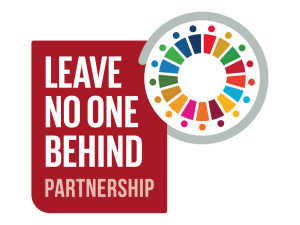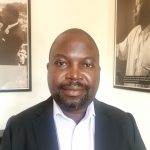When global leaders signed up to the 2030 Agenda for Sustainable Development and the Sustainable Development Goals (SDGs), they made a bold promise to leave no one behind and to address the needs of those furthest behind first. However, five years later, the number of people living in absolute poverty is on the rise. The COVID-19 pandemic has pushed many even further behind. A series of articles will explore insights on exclusion and marginalization from Bangladesh, India, Kenya and Nepal.
Established in 2017, the Leave No One Behind (LNOB) Partnership aims to give voice and agency to marginalized groups who are at risk of being overlooked in the implementation of the SDGs. To achieve this, the partnership combines community-driven data with advocacy, addressing key stakeholders in the SDG process at the national and international levels. The partnership is composed of the 12 largest international civil society organisations and country-based coalitions in Bangladesh, India, Kenya, Nepal, and Viet Nam. The International Centre for Civil Society acts as the global secretariat for the Partnership.
The so-called furthest behind are people with names, voices, and feelings.
The LNOB Partnership’s country teams have produced four studies under a project on ‘Making Voices Heard and Count.’ The studies entailed collecting community-driven data and tell the stories of marginalized groups.
In this series of articles, the Partnership will tell the stories of the people behind the data on leaving no one behind. The articles will be published on the International Institute for Sustainable Development’s (IISD) SDG Knowledge Hub https://sdg.iisd.org/ and on the LNOB Partnership website https://voicescount.org/.
Reaching Everyone, The Furthest Behind First
To identify and assist those furthest behind, data are needed on who they are, where they live, and the forces that push them behind, but statistics are far from perfect. “The real pain, the lived realities of the poor, continue to be masked under official data inferences,” said Claudia Wells, Director of Data at Development Initiatives, a member of the LNOB Partnership. “Community-driven data can be the missing bridge to reconcile community realities and official views,” she added.
 A household from the Baiga Community, Madhya Pradesh in India. The household has been left deprived of government benefits despite several attempts. (Source: WNTA).
A household from the Baiga Community, Madhya Pradesh in India. The household has been left deprived of government benefits despite several attempts. (Source: WNTA).
To reach everyone, disaggregated data must be available. But, as the stories will show, official narratives continue to exclude those who are furthest behind. A more inclusive approach to data gathering and analysis is needed, reflecting the multiple local drivers that add to the exclusion of these communities.
New Sides of the Story: Bangladesh, Kenya, India, and Nepal
Community-driven data assess poverty, inequality, and exclusion from the perspective of marginalized groups themselves. Peter Koblowsky, Senior Partnership Manager at the International Centre for Civil Society, said: “Local data are telling a side of the story often shunned by official data. It is a story that is lived, directly told by people who know and feel the difficulties their community faces day in, day out.”
In Bangladesh, communities have been assessing the quality of health services at referral hospitals, access to food, and cash assistance during the COVID-19 pandemic. “Without doubt, the community data reveals structural barriers standing in the way of SDG 3. If the goal is to achieve good health and well-being for all by 2030, then community assessments point to a clock that is moving backwards,” said Evana Ezzat Tanzila, Policy Analyst at BRAC. The Bangladesh article will cover assessment results scored by members of marginalized groups such as ethnic minorities (indigenous peoples), river gypsies, elderly people involved in begging, people living with HIV/AIDS, people living in hard-to-reach areas (char, haor, hills, islands, forests, etc.), sex workers, and Dalits.
According to George Awalla, Co-Convenor of the LNOB Coalition in Kenya, “We have learnt a lot from people with disabilities in four counties. It is a story of poverty, gender discrimination, and low levels of education. All these factors compound to harm the livelihoods of people with disabilities.”
In India, the 100 Hotspots initiative harnesses the concerns and aspirations of socially excluded communities such as Dalits, Adivasis, nomadic people, persons with disabilities, sex workers, sexual minorities, youth affected by gender-based violence, the Pahari Korwa and Sahariya tribal communities, street hawkers, and other vulnerable communities. The project provides geo-social tracking of SDG progress for economically and socially excluded communities on which limited primary data have previously been collected.
Annie Namala, Convenor of Wada Na Todo Abhiyan (WNTA), is happy to note the progress achieved through this collaboration. “Our work has been listed under the SDG Good Practices by the United Nations Department of Economic and Social Affairs https://sdgs.un.org/partnerships/100-hotspots. We look forward to the government accepting community-driven data to supplement and complement national datasets to develop community specific policies and provisions to ensure that SDG implementation leaves no one behind,” said Namala.
In Nepal, the LNOB Partnership used community-based scorecards, a social accountability tool, to assess the quality of local service delivery. “As we share community concerns with local officials, we feel that a new avenue for participatory and evidence-based public policy dialogue is opening up. It is a good start,” said Suran Maharjan, Programme Manager (Youth) at Voluntary Services Organization Nepal. Indeed, new and evidence-based data experiences can bring policymakers in closer touch with community realities such as extreme poverty, inequality, and discrimination.
Advancing the Community-Driven Data Movement
The series will also share learnings on participatory data collection approaches and evidence-based advocacy to advance knowledge about the realities of excluded communities across the four countries. As Koblowsky explains, “The common bond of our global partnership is anchored in a unique, community-driven data gathering approach. It is a solidarity undertaking that puts local data protagonists into the frontline of development. Communities must take the lead in analysing their realities, express their priorities and act for change.”
The stories will share these analyses and look at how the LNOB Partnership is facilitating exchange of international advocacy experiences, including amplification of community voices in global policy spaces such as the annual sessions of the UN High-level Political Forum on Sustainable Development (HLPF).
“As an international network, we are moving data from the bottom up. We are adding our weight to the many voices demanding better and more inclusive data to close knowledge gaps concerning vulnerable groups. The so-called furthest behind are people with names, voices, and feelings. All they are demanding is to be heard. An effective SDGs response will be incomplete without them,” said Namala.
This article is written by Davie Malungisa, consultant to the Leave No One Behind Partnership. Malungisa is a lawyer based in Johannesburg, and formerly an advisor to Amnesty International and Oxfam America. This article is the lead article of a series of articles about the work of the partnership, to be published simultaneously on voicescount.org and the Global SDG Knowledge Hub of IISD.









